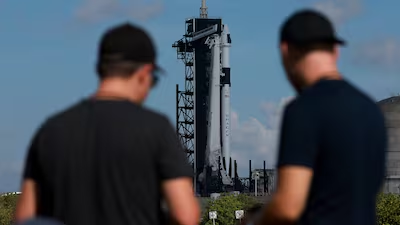
A new study highlights the potential impact of extended spaceflights on astronauts' brain structure. Getty
A new study highlights the potential impact of extended spaceflights on astronauts' brain structure. Getty
Astronauts' brains show signs of damage after long missions, study finds
Shorter recovery periods between spaceflights may not allow for complete brain structure recovery
